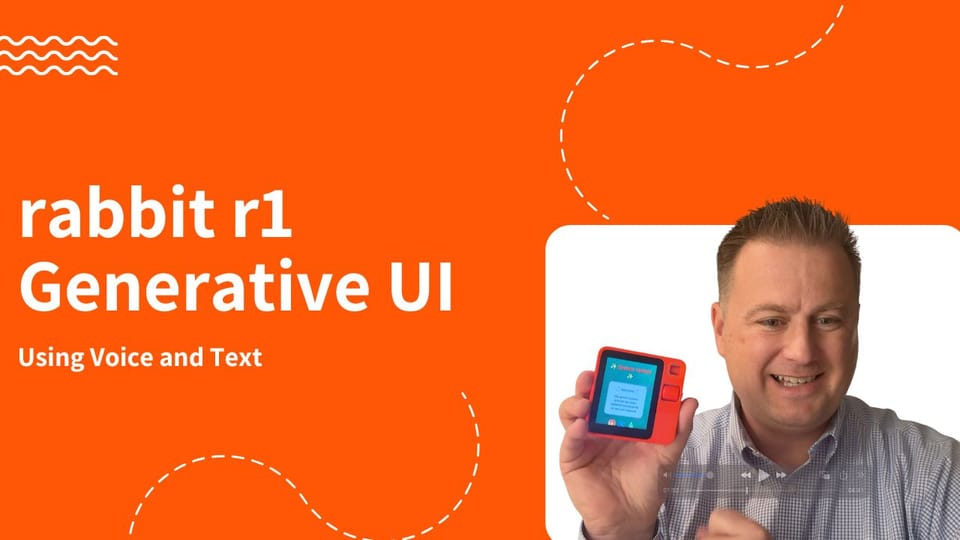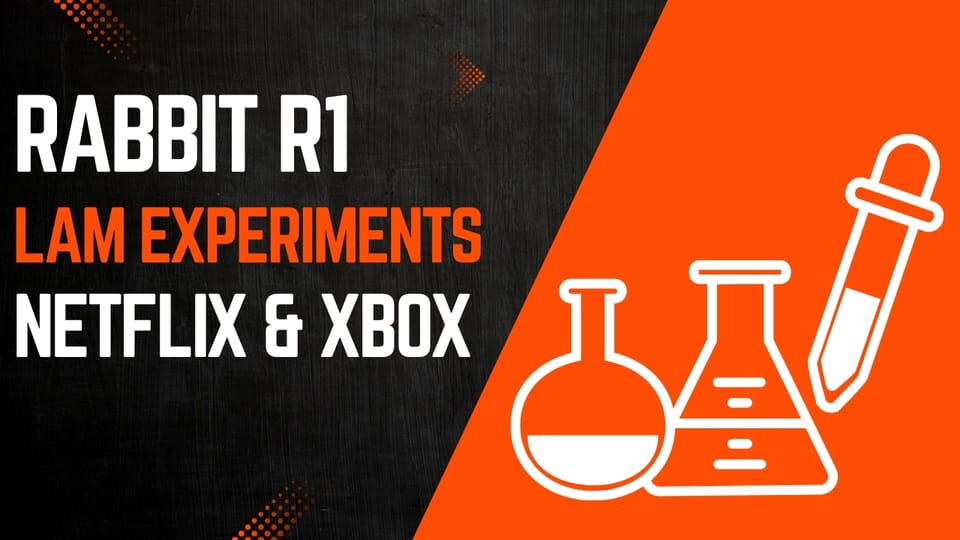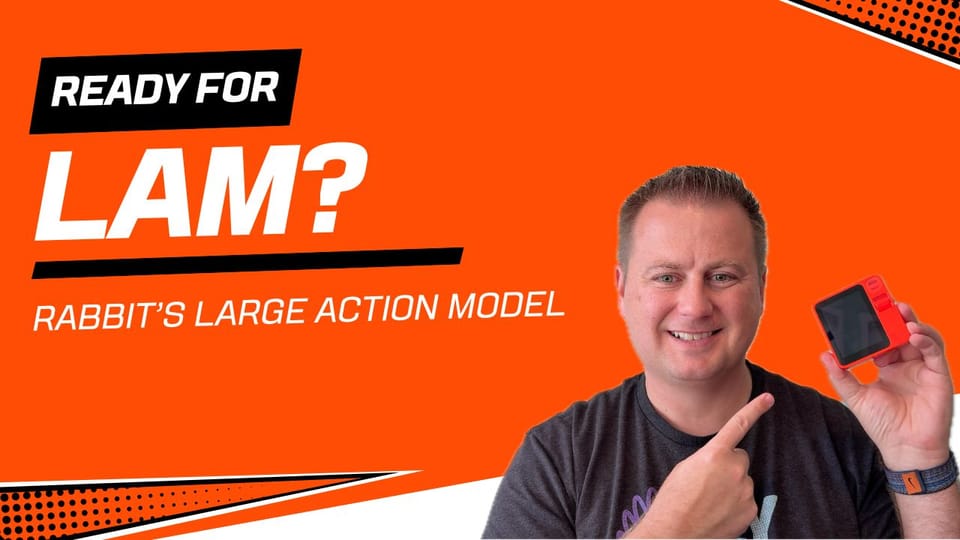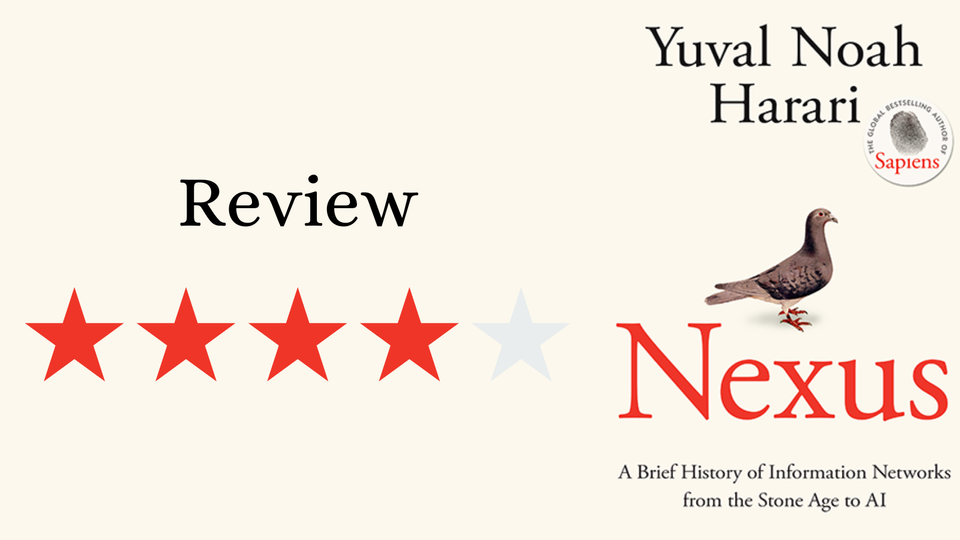AI Innovation, Toy, or Scam?
What is the rabbit r1?
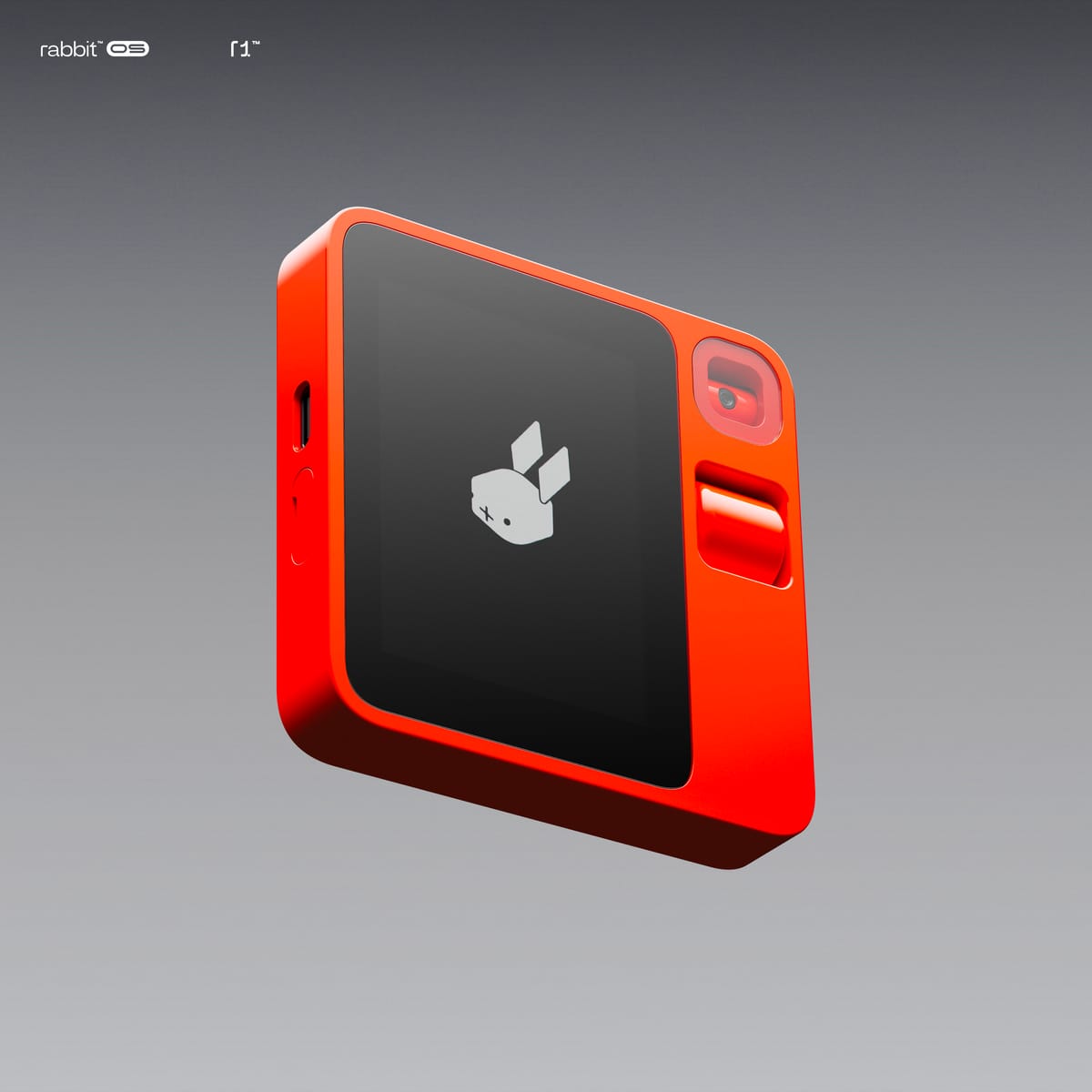
I've been obsessed with the rabbit r1 since it was announced at this year's Consumer Electronics Show in Las Vegas. During the product's prerecorded announcement, Founder and CEO Jesse Lyu demoed how this quirky, exceedingly orange box with a push-to-talk button, a small display featuring a bouncing rabbit, a scroll wheel, and a 360-degree rotating camera could help us order food from DoorDash, summon an Uber ride, create AI images using Midjourney, play songs through Spotify, answer questions about the world, and - most importantly - take actions on our behalf across multiple apps using just our voice. This (supposed) Large Action Model (LAM) promised to be the innovation that merited the device's existence.
In fact, Lyu previewed something called "teach mode," where a user could use an online interface to "show" rabbit r1 how tasks could be completed. In the future, Lyu claimed, your rabbit r1 could complete these multi-step projects after a quick voice prompt. This idea, I must admit, was intriguing.
Imagine teaching a $200 device where to gather data for a work project and then asking it to assemble tables in Excel before emailing them to your team. Or, imagine sending out a search query across multiple news sites, gathering summaries, and drafting a presentation on a current event. The opportunities seemed endless and worthy of such a modest purchase price that didn't require a recurring subscription.
Plus, the rabbit r1 looks cool! Crafted by teenage engineering, the design exudes playfulness and whimsy.
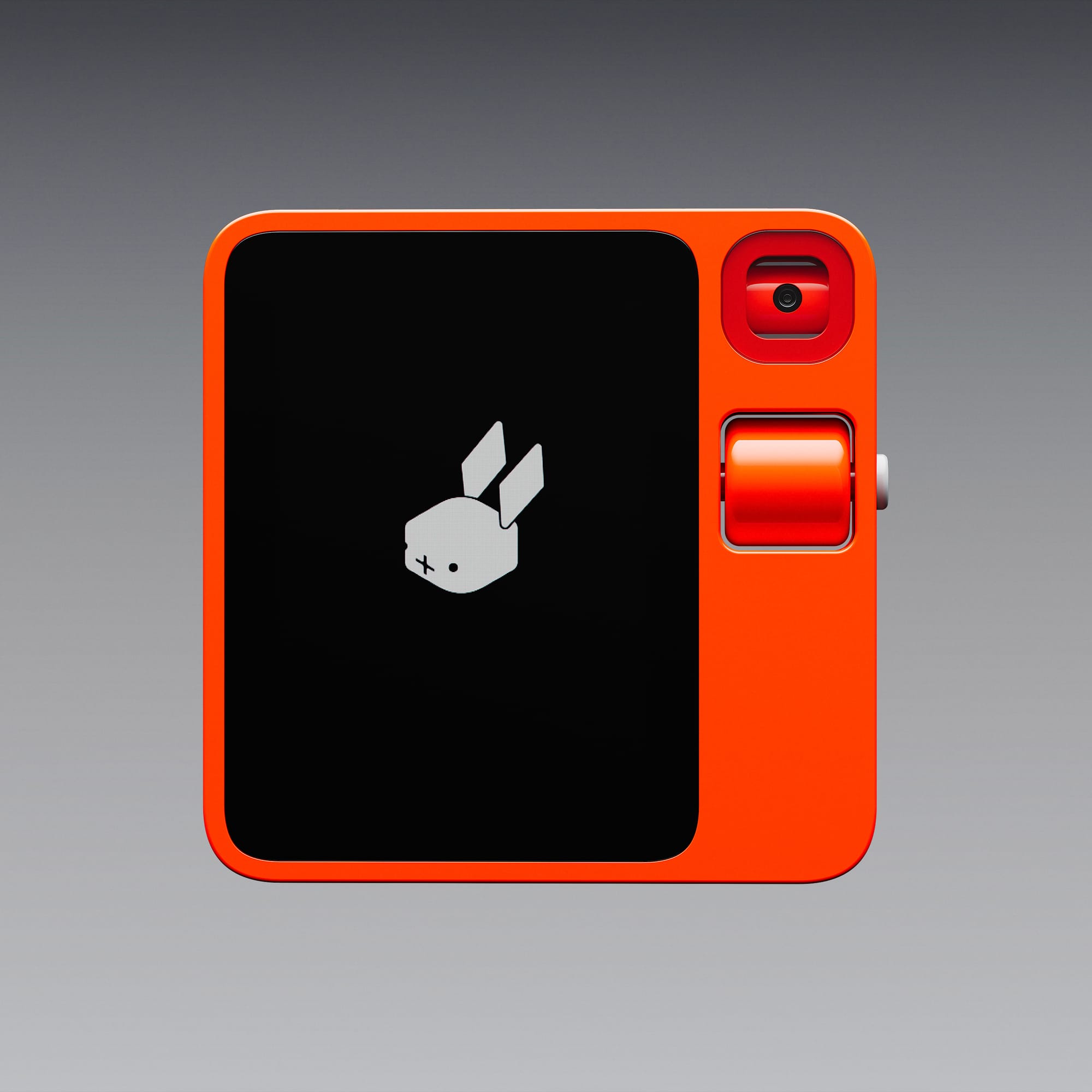
But when the product released, reviewers lambasted it. Marques Brownlee (aka MKBHD), arguably the most influential tech reviewer on YouTube, said the rabbit r1 was "barely reviewable." David Pierce, Editor-at-Large at The Verge, posted a video review with a thumbnail image reading, "this sucks." Writing for WIRED, Julian Chokkattu scored the rabbit r1 3 out of 10, writing "The reality of the R1 is that it promises to do so much but does very little."
Of course, many products overpromise and underdeliver, but something seemed different about the rabbit r1. The device didn't seem to deliver on the basic functionality outlined in Lyu's announcement video. DoorDash seemed busted. Uber rarely worked. And users reported that all too often, the rabbit r1 just wouldn't respond to questions or prompts.
Some people began to wonder if the rabbit r1 was a scam. A cash grab. In fact, Coffeezilla, a YouTuber who says he "uncover[s] scams, fraudsters and fake gurus that are preying on desperate people with deceptive advertising" began asking questions. Eventually, he released two damning videos. The first video, titled "$30,000,000 AI is Hiding a Scam," has been watched more than 3.5 million times. The second video, titled "Rabbit Gaslit Me, So I Dug Deeper," is approaching 4 million views. In summary, Coffeezilla claims Lyu has a history of promising the world and delivering little to nothing. Lyu, for example, was involved in a crypto company focused on "Next Generation NFT Project GAMA" positioned "at the intersection of storytelling, gaming, community-ownership, and digital identity." To put it mildly, the project failed to produce meaningful progress toward its objectives despite securing more than $6 million in funding.
So, is the rabbit r1 any different? Is it at the forefront of AI innovation? Is it a toy for tech enthusiasts to pull out at parties and scroll on when the flat glass screens of their phones have become boring? Or, is it simply a scam?
I think the truth lies somewhere between the product being innovative and a toy.
The rabbit r1 uses large language models (LLMs) and Wolfram Alpha to answer questions asked by voice, text, or visual input. So can a variety of tools, including ChatGPT and Perplexity, on your phone. (In fact, rabbit r1 leverages both of these technologies for its responses.) What's nice about having the rabbit r1 is that it's not your phone. It's not dinging with notifications and emails and work chats.
rabbit r1's design and lack of messaging capabilities make it seem toylike. Rather than viewing this as a negative, though, I would encourage rabbit to fully embrace this fact. Although I don't own a rabbit r1, it seems like the ideal use case would be for my children. Here's why.
- I don't want my young children to have a phone, but I want them to be able to ask questions about the world and get detailed answers.
- I like the fact that the rabbit r1 isn't always listening for a key word or phrase. The push-to-talk button has to be activated to "listen." This is a win for privacy-minded consumers.
- The camera is shielded when it's not in use. Again, the user has to take a specific action to use the camera. Another win for privacy.
The combination of the three points above makes this a nearly perfect device to hand my kids so that they can identify plants and bugs, ask questions as they read, or get help on tricky school assignments.
In fact, I've wondered on many occasions if rabbit's marketing should focus on educational uses. Schools spend lots of money on Chromebooks and iPads, but these can be cumbersome to carry and charge each day. Imagine if students carried around a small device that didn't invite them to message each other, watch YouTube, play browser-based games, or be distracted by the additional functionality of the aforementioned devices. Of course, this isn't to say that the word processing, spreadsheet creation, virtual meeting, and collaborative creation aspects of other devices aren't valuable. They're tremendously so! But they're not always required, and many educators will tell you that they wish students could "get off their Chromebooks" and, in a word, focus.
What if a simpler device (that also happens to be delightfully designed) could help?
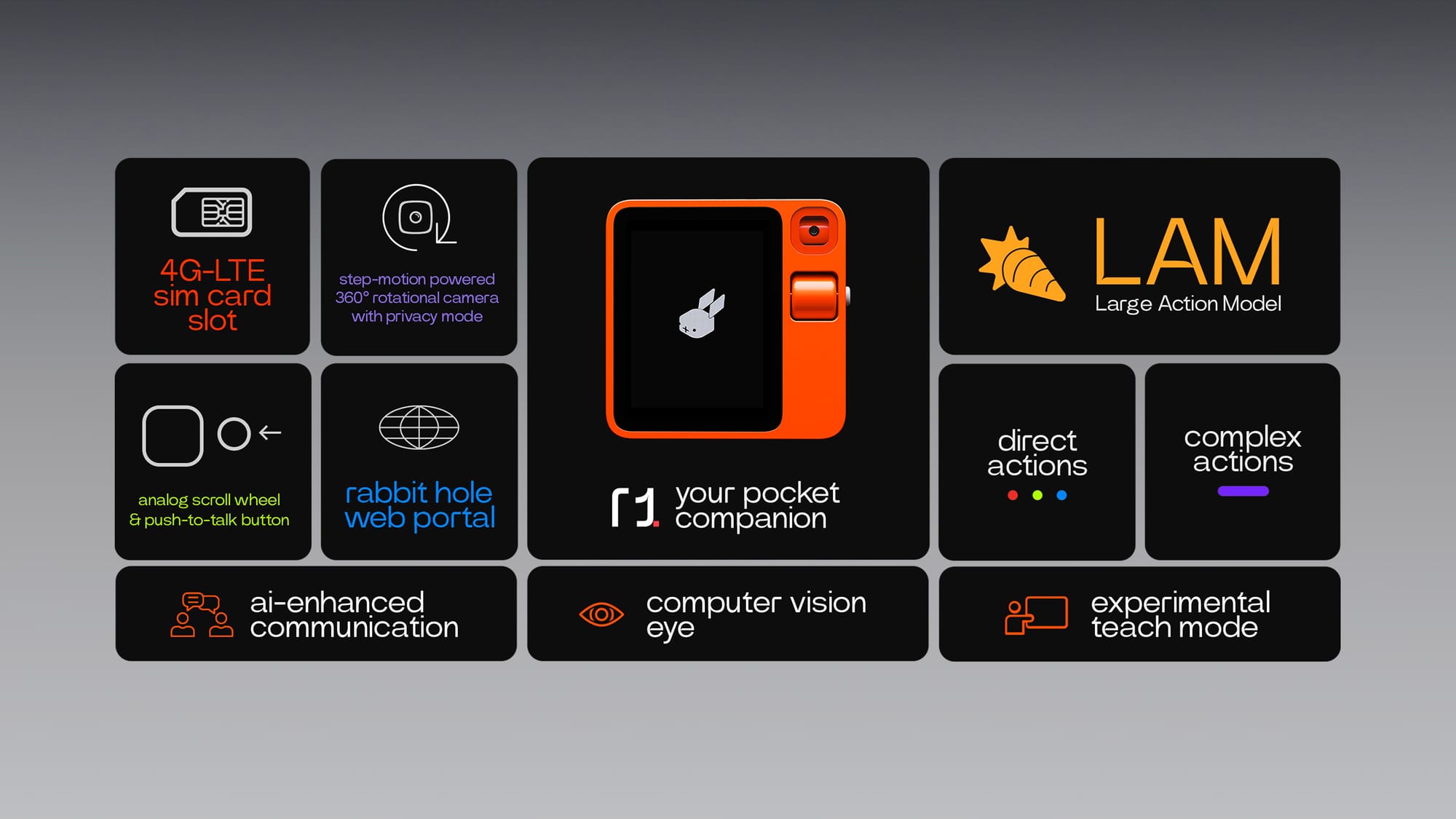
The Wait Until 8th campaign invites parents to hold off on buying smartphones for their kids as long as possible. But there's no denying the value of artificial intelligence for helping youth explore the world and nurture their curiosity. Perhaps I'm naive or optimistic (or both), but I think a device like the rabbit r1 could be a helpful middle ground between using smartphones to learn or sticking with printed materials only.
We will see what Lyu and rabbit's intentions are in the months ahead. I hope they don't miss the opportunity to meet a unique market need: providing an innovative toy for kids (and adults) to embrace their inquisitiveness without succumbing to the allure of an infinite set of apps begging to be opened.
All images provided by the rabbit press kit.
